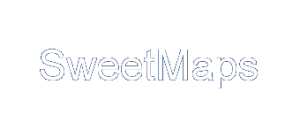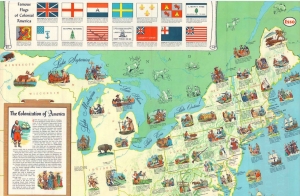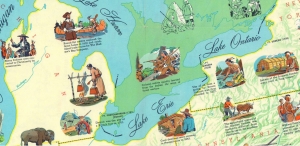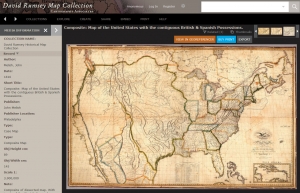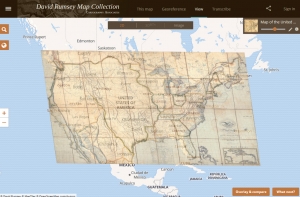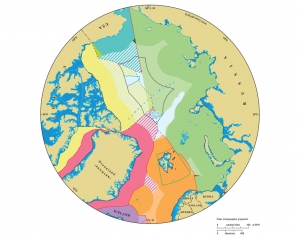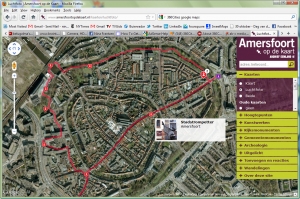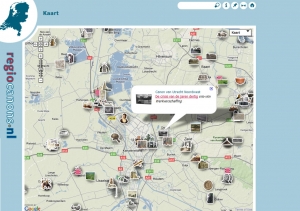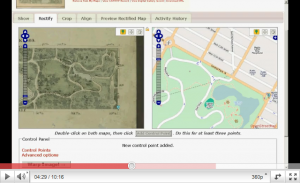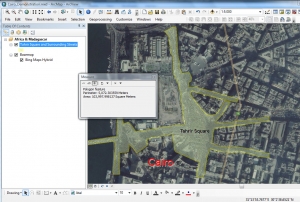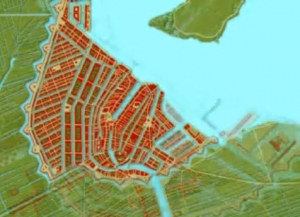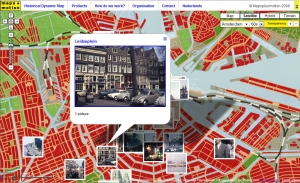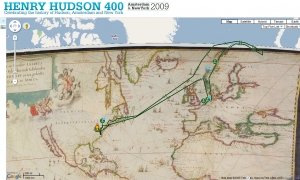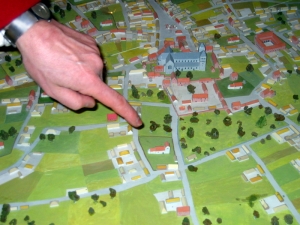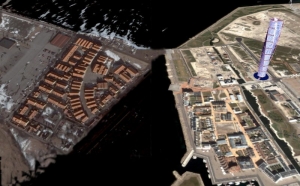Wonders of Reddit – Colonial America
Very, very late to this game, I’m discovering the wonders of Reddit – specifically the subreddit “Map Porn“, and the title sums it up. For starter, there is this 1957 educational map created by Esso Standard Oil which was recently posted. The comments are also great, including critique that the Dutch flag and colors are wrong… and that this was an America without slavery!
Note also, that Seneca Indians in New York State used oil from a spring (second zoomed image) – apparently for medicinal purposes. Fun fact (as they say), this is recorded as the discovery of oil in America! Dive in here – also an interactive map website. No more oil here, but a rich history.
